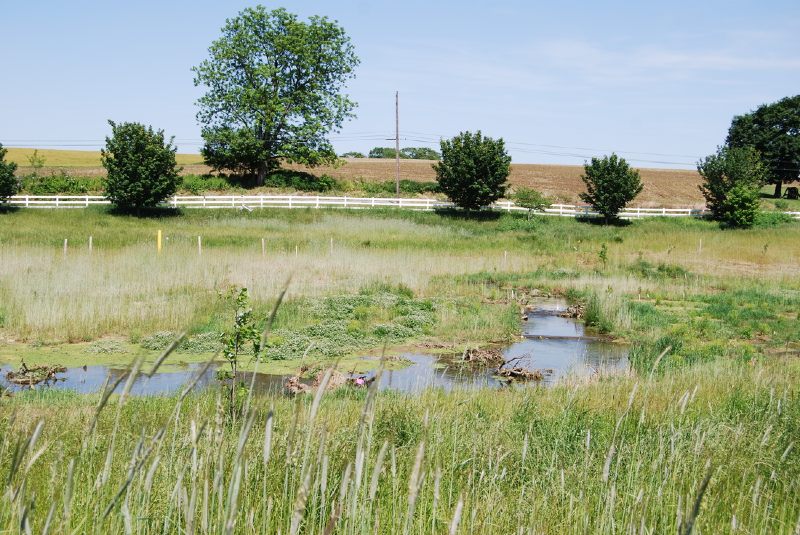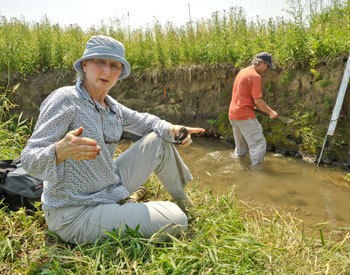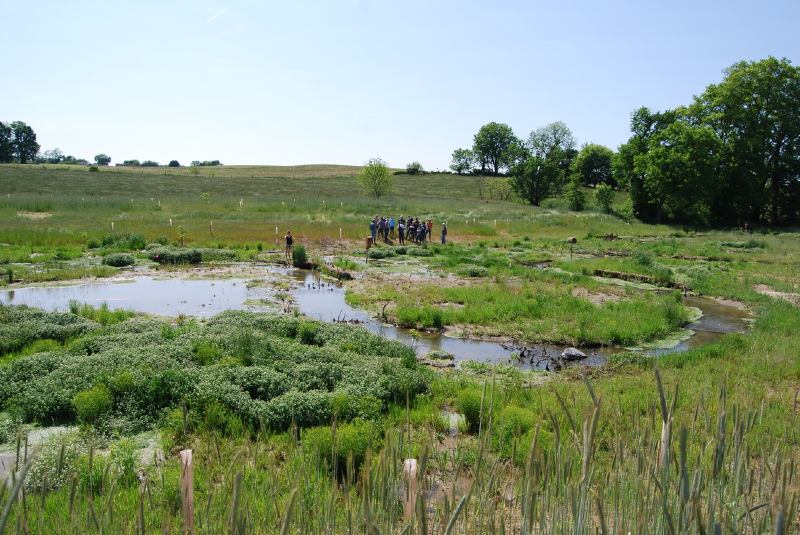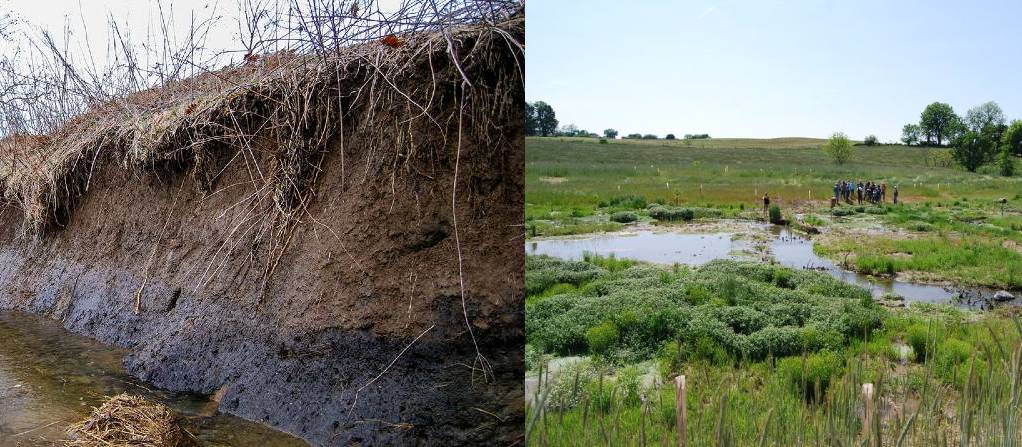A pair of east coast scientists met and fell in love over an interest in researching mud, years before producing a paper that would change how the Eastern United States conducts river restoration.

Though controversial among mud experts, their work has created flourishing stream and river ecosystems that resemble their pre-colonial states of low-banked, ecologically diverse, marshy waterways: a big change from the high-banked meandering streams covered in reeds that we often see today.
Dorothy Merritts and Robert Walter, two scientists who started working together as peers, ended up producing a ‘mud-breaking’ research paper as husband and wife.
Their work showed that almost all streams and rivers in the Eastern United States are actually victims of colonial-era tampering that buried resilient and complex river ecosystems under yards of silt.
While this discovery may seem like the lifework of eccentric scientific specialists, to be debated in the obscurest of journals and classrooms, the real-world implications could be enormous for riverine construction and flood insurance firms.
They buried their heads in the mud

Dorothy Merritts, 62, is a geomorphologist at Franklin & Marshall College in Pennsylvania, who, after a long and adventurous career in the field, decided to shift focus in 2002 to concerns of silt erosion in rivers on local farmland.
On a research trip, her students produced a photo of a six-foot high bank of laminated layers of mud from the Little Conestoga River in PA.
Merritts would eventually show the photo to her future-husband Robert Walter, 69, also a geomorphologist at F&M, who was certain that the mud had been deposited in still water—originating because of a dam or lake, rather than through the flowing of a river.
Sure enough, after traveling to the Little Conestoga, they found the remains of an 18th-century milldam upstream—an artificial stopper in the river that would have channeled the water to power a grain mill.
“[Our] data, as well as historical maps and records, show instead that before European settlement, the streams were small anabranching channels within extensive vegetated wetlands that accumulated little sediment but stored substantial organic carbon,” explained Merritts and Walter in their 2008 paper which received over 750 citations and many critiques from fellow mud enthusiasts.
“Subsequently, 1 to 5 meters of slackwater sedimentation, behind tens of thousands of 17th- to 19th-century milldams, buried the presettlement wetlands with fine sediment.”
A billion dollar industry
Their discovery earned them a fair bit of criticism with other muddy-minded geologists who argued that the evidence gave them an inch and they took a mile. However, for private-sector business, and local government agencies, the discovery meant that they might be wasting millions on projects that would be done away if floods pushed tons of “legacy sediment” built up around the milldams, into newly dug rivers.
MORE: Scientists Use Tiny Spring Magnets to Harmlessly Dissolve Microplastics in Water
As state environmental agencies and private landowners began applying Merritts and Walter’s conclusions, the market would decide the outcome of the debates that had been set off in journals like Science and Nature, following their discovery. In 2011, one PA landowner, Joe Sweeney, hired a river-restoration firm to discover why trees he planted along a section of Big Spring Run that ran through his property couldn’t survive.
Walter and Merritts, along with their students, dug pits and determined that several yards of legacy sediment prevented the trees from reaching the groundwater. Together they decided to try and return Big Spring Run into what Walter and Merrits imagined it looked like before Europeans arrived on the continent.
MORE: Cheap 2D Material Can Cleanse 99.9999% of Bacteria From Water in 30 Minutes Simply by Using the Sun
After more than two years of planning and assistance from local and federal environmental agencies, 22,000 tons of mud were bulldozed off a four-square kilometer stretch of the river.
Underneath, the black, soaking wet soil of a past era revealed itself.

In just one year, Big Spring Run was a riverine paradise of bog turtles, geese, and trees centered around a low-banked river that slowly spills over a marshy area that contains triple the sequestered carbon than before, and that doesn’t have to regenerate after every severe storm.

Subsequent examinations on the economic effectiveness of the Big Spring Run restoration found it was 16 times more cost effective than comparable strategies.
Walter and Merritts’ love for mud and for each other has rearranged perspectives of rivers around the country, and their methods have been applied in states outside the mid-Atlantic, where milldams were most common, like Kentucky.
READ: Determined to Save His Country’s Water Supply, 26-Year-old Has Revived 10 Lakes From a Polluted Mess
For the sake of our rivers, it’s good to know there are people excited to get their hands muddy.
SHARE The Good Science News With Your Friends On Social Media…




















